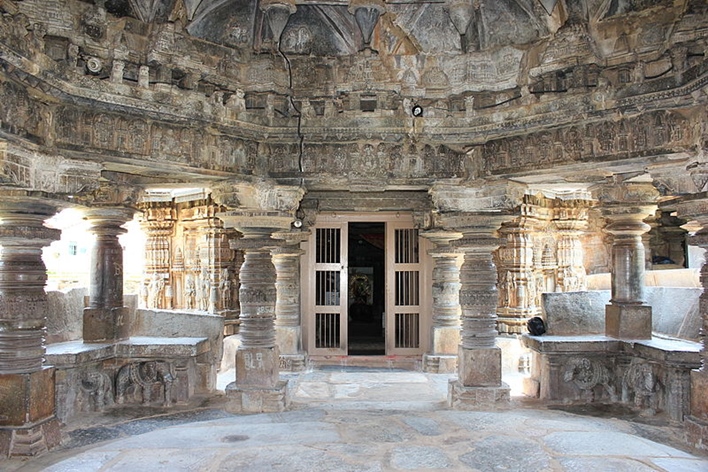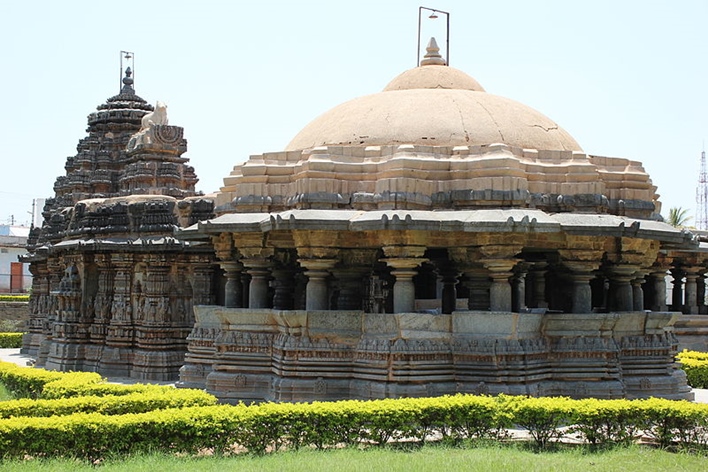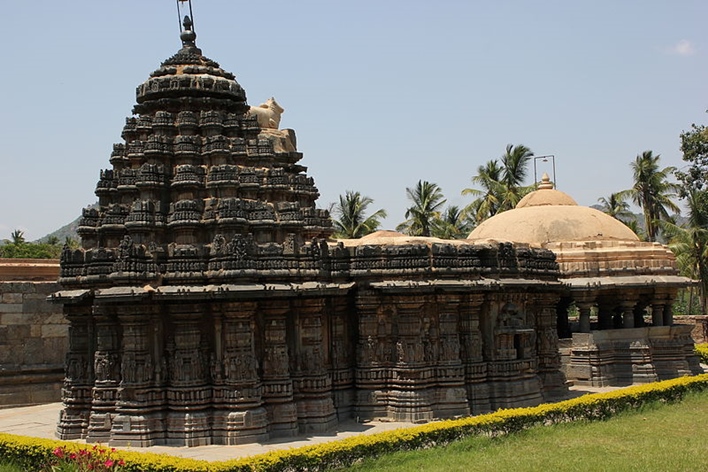The Shiva Temple or Ishvara Temple which has magnificent architecture dates back to 1220 CE rule of Hoysala Empire. The temple is located in Arasikere town in the district of Hassan. The deity worshipped in Ishvara Temple is Shiva.
Arasikere in the local language refers to ‘Queens Tank’ as Arasi means ‘Queen’ and Kere mans ‘Tank’. The Ishvara temple is considered as one of the most complicated architecture amidst the surviving structures of Hoysala. The temple is situated at a distance of 140 km from Mysore and 41 km from Hassan.
The peculiar thing about the Ishvara or Eshwara Temple is its 16 pointed star-shaped mantapa (a hall for devotees to perform prayers) sculpture along with an asymmetrical structure that is star-shaped, whose star shapes are of three different sizes. The temple has intricately carved figure sculptures depicting work of extreme dexterity.
Architecture of Ishvara Temple Arasikere
The sanctuary, like all Hoysala sculptures, faces east and uses soapstone as construction material. It is an Ekakuta (single) shrine temple with two mantapas, one is open and another one is closed. The sanctum beholds the linga representing Lord Shiva. Unlike the Hoysala construction, the open mantapa of the temple provides no entry to the devotees. The entrance to the sanctuary is through a bay between the two mantapas. The ceiling of the closed mantapas is segregated into nine bays. The ceiling is supported by four lathe turned in to pillars. The closed mantapas have no windows.
Hoysala architecture is influenced by Dravidian style as is evident from the Ishvara temple. The sculptures and stone carvings portray the splendor and richness of Hoysala sculpture. The gracefully carved intricate designs on the ceilings, walls, mantapas and shrine, both interior and exterior are a dedicated work of true art and craftsmanship.

Stellate plan of open navaranga mantapa. Image courtesy: Dineshkannambadi
The shrine’s shikhara or tower on the top has a decorated water pot like sculpture called kalasha. The shrine is connected to the closed mantapa through a vestibule with a tower named sukanasi. As this tower is lower to the main tower it is often referred as the ‘nose.’ The nose has a sculpture of a bull (Nandi), unlike the Hoysala temples which have a legendary warrior ‘sala’ fighting a lion, depicting as the royal emblem.
The outer wall of the shrine and vestibule share the same decoration or design but because of the short continuation of the wall and closed mantapa, the decorations are unnoticeable. The outside wall of the shrine is star shape pointed (Stellate) but the star point is not identical rather they are asymmetrical displaying quite a complicated design. The lower part of the outer wall of the mantapa and that of the shrine share the same architectural style.
How to Reach Ishvara Temple Arasikere
The closest city to Ishvara temple is the city of Hassan, which is closely connected by rail and road. Hassan does not have an Airport and the closest Airport is that of the city of Bangalore and Mysore.
By Road
Ishvara temple is just 40 km from Hassan city. There are private and KSRTC (Karnataka State Road Transport Corporation) buses running between Hassan city and Arasikere
By Rail
Arasikere district lies in the Mysore division and there is a railway junction between Bangalore and Hubli. There is a number of trains running between Bangalore, Hubli, Hassan, and Mangalore. Almost 30,000 people travel from Arasikere, which is 166 km from Bangalore, to other cities daily. More than 80 trains stop at Arasikere on a daily basis.
By Air
Hassan does not have an Airport. The closest Airport is the Bangalore airport and Mysore Airport.

